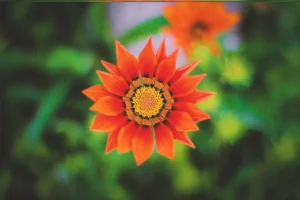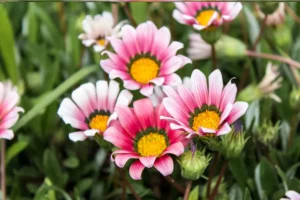Penstemons, known for their vibrant and eye-catching flowers, can truly enhance the beauty of any garden. To ensure that these stunning blooms continue to thrive and dazzle, it’s essential to understand the art of deadheading. In this guide, we’ll delve into the intricacies of deadheading penstemon, providing you with expert tips and techniques to keep your garden looking its best.
The Importance of Deadheading Penstemon
Deadheading is the practice of removing spent or faded flowers from your penstemon plants. This seemingly simple task holds immense significance for the overall health and appearance of your garden. Here’s why it’s crucial:
Prolonged Blooming Period
By deadheading penstemon, you encourage the plant to redirect its energy towards producing new blooms rather than setting seeds. This results in a prolonged blooming period, ensuring that your garden remains vibrant and colorful for an extended duration.

Improved Aesthetic Appeal
Removing spent flowers not only extends the blooming season but also enhances the overall appearance of your penstemon plants. Your garden will look tidier and more attractive, making it a visually appealing space for relaxation and enjoyment.
Preventing Self-Seeding
Penstemons are prolific seed producers, which can lead to unwanted self-seeding and overcrowding in your garden. Deadheading helps control seed dispersal, preventing your garden from becoming overly dense and unruly.
A Step-by-Step Guide to Deadheading Penstemon
Now that you are aware of how crucial deadheading is, let’s get started. To efficiently deadhead your penstemon, follow these steps:
Step 1: Gather Your Tools
Make sure you have the necessary tools available before you begin in order to prevent the transmission of illness among plants. A pair of razor-sharp scissors or pruning shears is required.
Step 2: Identify Spent Flowers
Check your penstemon plant carefully and take note of any faded or wilted flowers. These are things you’ll get rid of.
Step 3: Locate the Node
Look for a leaf node just below the faded flower. This is where you’ll make your cut. The node is the point on the stem where new growth and flowers will emerge.
Step 4: Make the Cut
With your pruning shears, make a clean and precise cut right above the leaf node. Ensure that you don’t damage any emerging buds or leaves in the process.
Step 5: Continue Deadheading
Repeat the process for all the spent flowers on your penstemon plant. Be thorough but gentle to avoid causing harm to the healthy parts of the plant.
Step 6: Dispose of Debris
Collect all the removed flowers and plant debris and dispose of them properly. This prevents the risk of diseases spreading in your garden.
Transitioning with Style
Now that you’ve mastered the art of deadheading penstemon, your garden is on its way to becoming a stunning showcase of vibrant blooms. Remember to deadhead regularly throughout the growing season to enjoy the full benefits of this simple yet impactful practice.

In conclusion, deadheading penstemon is an essential technique for gardeners looking to maintain a beautiful and healthy garden. By removing spent flowers, you’ll not only prolong the blooming period but also enhance the visual appeal of your outdoor space. So, grab your pruning shears and get ready to transform your garden into a masterpiece of color and elegance. Happy gardening!
Should I deadhead my Penstemons?
Yes, it is typically a good habit to deadhead your penstemons. Removing spent or faded blooms from a plant is known as deadheading. You should think about deadheading your penstemons for the following reasons:
Promotes More Blooms
Deadheading encourages the plant to produce more flowers. By removing the spent blooms, you prevent the plant from putting energy into producing seeds and instead redirect that energy into producing new flowers.
Aesthetics
Removing the dead or faded flowers keeps your Penstemon looking tidy and attractive. It can also extend the overall flowering period, providing you with more vibrant blooms to enjoy.
Prevents Self-Seeding
Penstemons can self-seed if you allow the flowers to go to seed. While this can be desirable in some cases, it can also lead to an overabundance of Penstemons in your garden. Deadheading can help control this.
Here’s how to deadhead your Penstemons
Wait for Fading
Allow the Penstemon flowers to naturally fade and wither. You’ll notice that the petals start to lose their color and vitality.
Cut the Stems
Using a pair of clean, sharp garden shears or scissors, locate the stem just below the faded flower. Cut the stem cleanly at this point.
Dispose of Spent Blooms
Collect the removed flowers and dispose of them, especially if you want to prevent self-seeding.
That different Penstemon species may have slightly different requirements, so it’s a good idea to research the specific variety of Penstemon you’re growing to ensure you’re deadheading it correctly. Overall, deadheading is a simple task that can help keep your Penstemons healthy, vibrant, and looking their best.
Can penstemon be deadheaded after blooming?
Yes, after blooming, penstemon can be deadheaded. Removing spent or faded blooms from a plant is known as deadheading. You may encourage penstemon to produce more blooms and lengthen its flowering period by deadheading the plant.
How to deadhead penstemon is shown here:
- Wait until the penstemon’s blossoms have withered and gone to seed.
- Cut off the faded blooms with a pair of tidy, razor-sharp pruning shears or scissors, immediately above a pair of sound leaves or a leaf node. To avoid water from collecting on the cut stem, make the incision at an angle.
- Throughout the blooming season, keep deadheading the specific wilted blooms as needed.
- To keep the plant looking neat and healthy, be sure to remove any dead or yellowing leaves as well.
In addition to making the penstemon look more attractive, deadheading causes the plant to focus its energy on creating new flowers rather than seeds, which leads to a longer and more abundant flowering season.
Does deadheading produce more flowers?
The act of deadheading involves removing wasted or faded flowers from a plant. Deadheading is mostly done to make the plant look better overall and stop it from utilizing its energy to make seeds. Deadheading doesn’t always lead to more blossoms, but it can make a plant look neater and more appealing. Under some circumstances, it can promote some plants to produce more blooms.

The effect of deadheading on flower production depends on the type of plant. Some plants will naturally produce more flowers if you deadhead them because it signals to the plant that it should redirect its energy into producing new blooms rather than seeds. This is especially true for many annuals and some perennials.
In contrast, some plants are not significantly affected by deadheading, and their flower production is more determined by factors like genetics, environmental conditions, and overall care.
So, while deadheading can promote more flowers in some cases, it’s not a guarantee for all plants. It’s a good practice for maintaining the appearance and health of your garden, but its impact on flower production varies depending on the specific plant species.
Where do you cut when deadheading?
When deadheading plants, you should typically cut or remove the spent flowers or flower heads from the plant. The exact location to make the cut can vary depending on the type of plant you are deadheading. Here are some general guidelines:
Above a Leaf Node
For most flowering plants, including annuals, perennials, and shrubs, you should make your cut just above a leaf node. A leaf node is where a leaf is attached to the stem, and it often looks like a small bump or nub. Cutting just above a leaf node encourages new growth and branching.
45-Degree Angle
When making your cut, it’s a good practice to make it at a 45-degree angle. This helps prevent water from pooling on the cut surface and potentially causing rot.
Remove the Entire Spent Flower
Ensure that you remove the entire spent flower head, including any stem or portion of the flower that has faded or wilted. This helps the plant redirect its energy toward producing new blooms.
Use Clean and Sharp Pruning Shears
It’s important to use clean and sharp pruning shears or scissors when deadheading to make clean cuts that minimize damage to the plant.
Timing
As soon as the flowers start to wilt or fade, deadhead the plants. The blooming season is extended and the plant is encouraged to produce more flowers as a result.
Remember that deadheading is a beneficial practice for many flowering plants because it promotes continued blooming and keeps the plant looking neat and attractive. However, some plants, such as those that produce ornamental seed pods or berries, may be exceptions, and deadheading may not be necessary or desirable for them. Always consider the specific needs and characteristics of the plant you are working with.
Final Thought
Deadheading penstemon is a simple and effective way to promote stunning blooms in your garden. By removing spent flowers, you encourage the plant to redirect its energy towards producing new buds and blooms. Regular deadheading also helps maintain the overall health and appearance of the penstemon plant. Remember to use clean and sharp garden shears to make clean cuts just above a leaf node or bud. So why wait? Grab your shears and start deadheading today for a garden full of vibrant and beautiful penstemon blooms all season long!